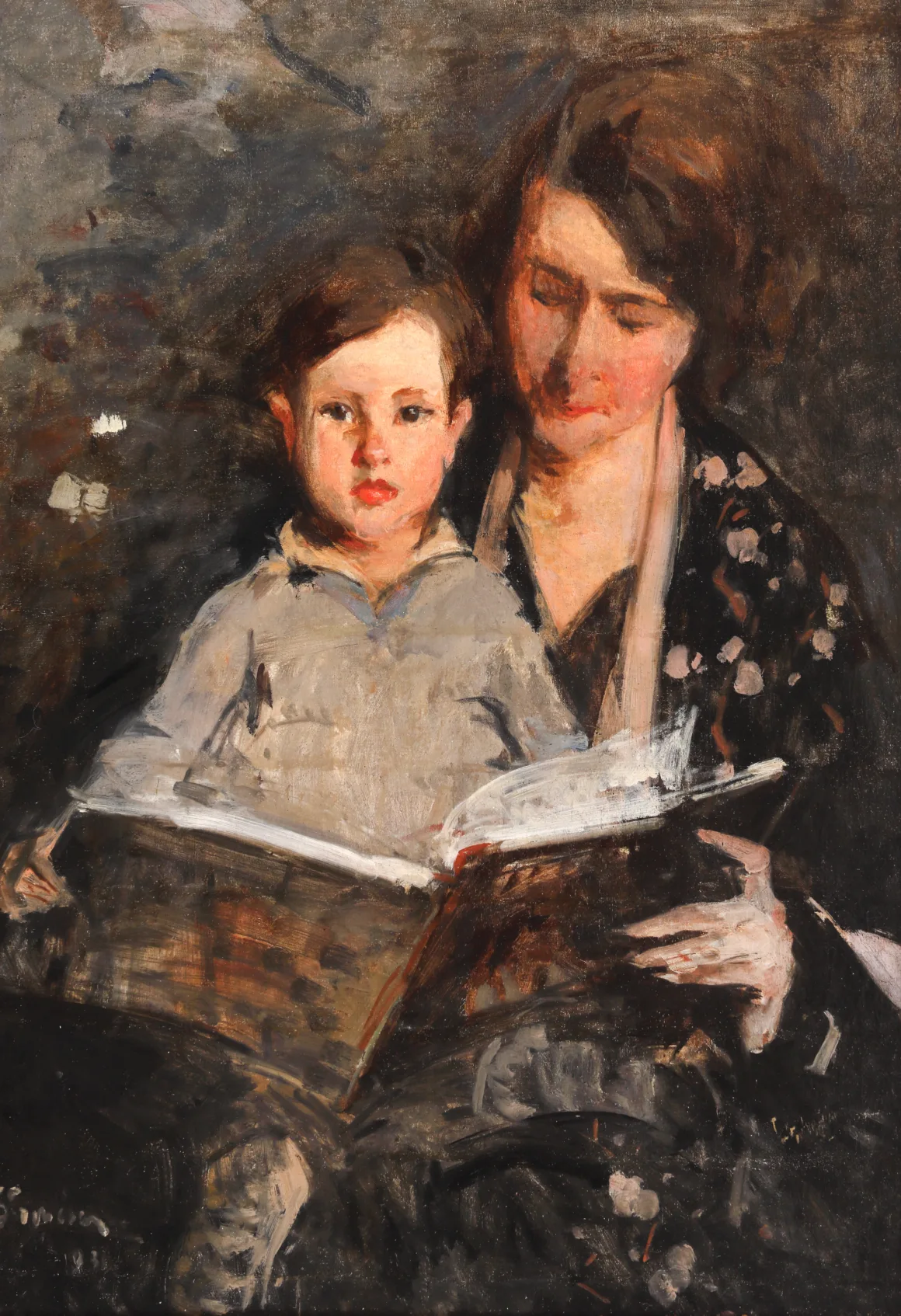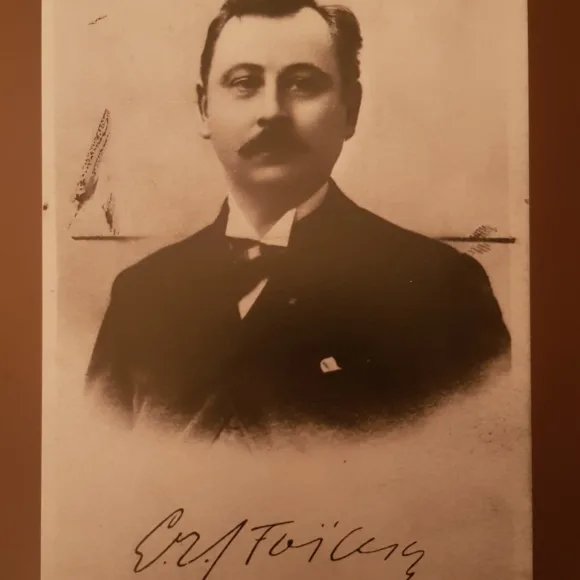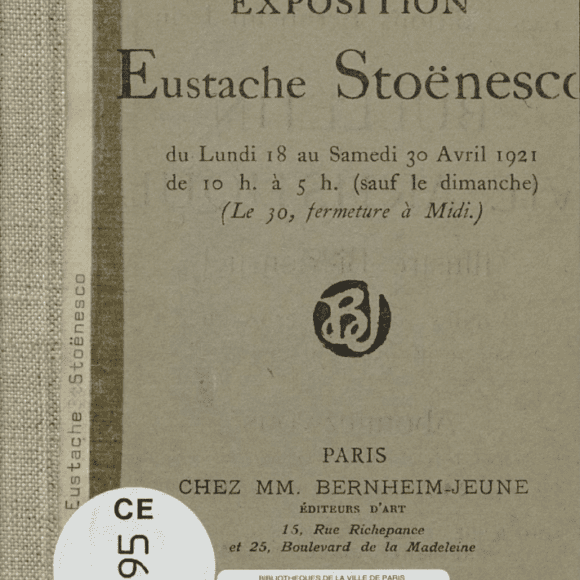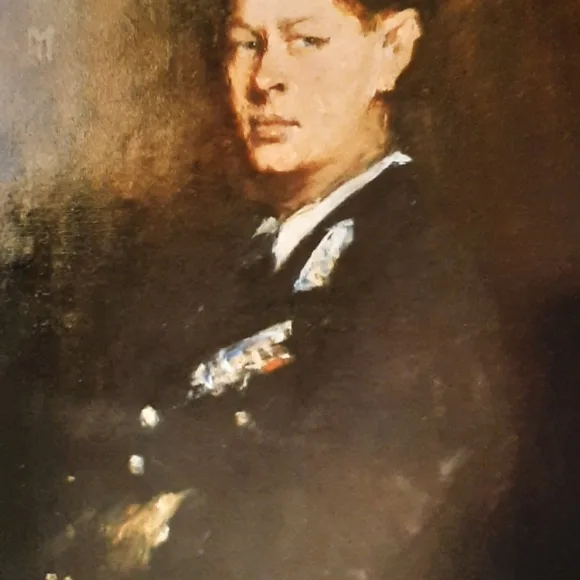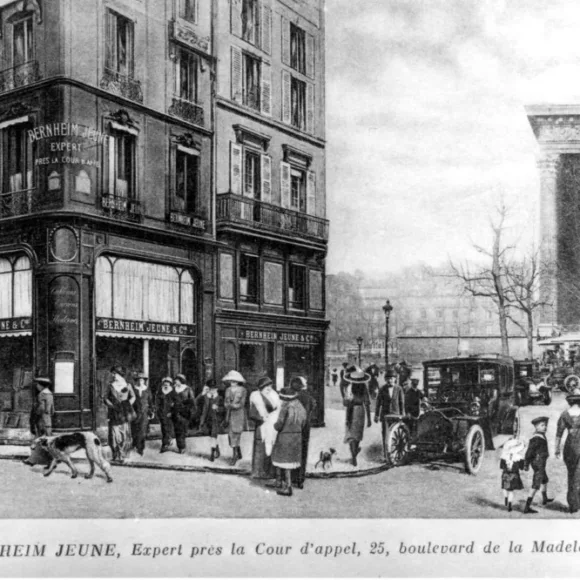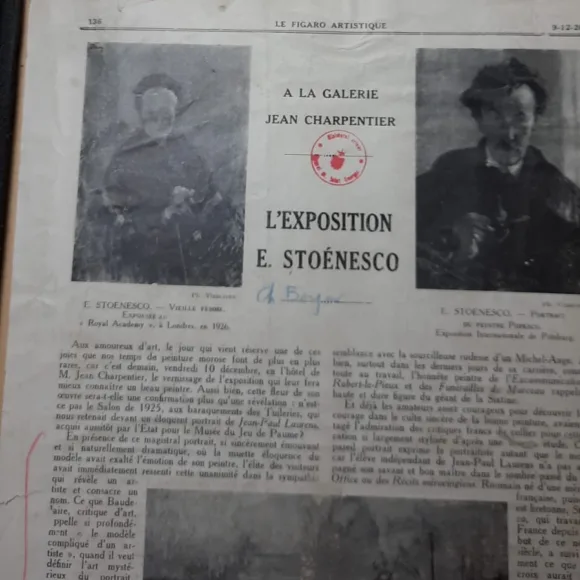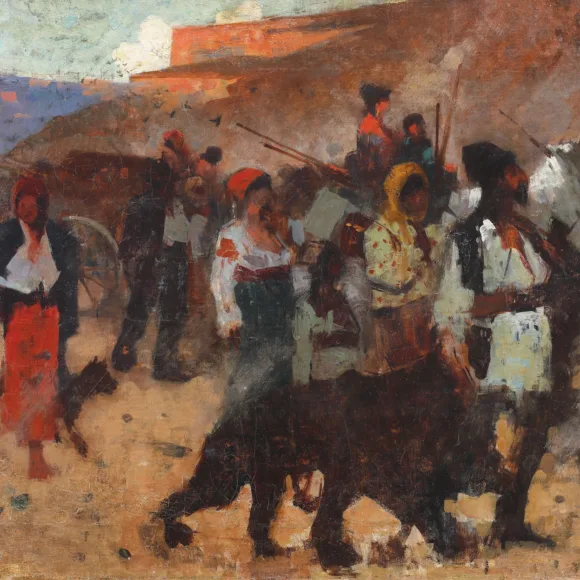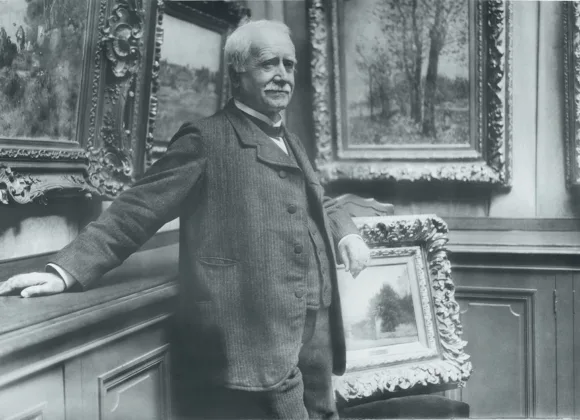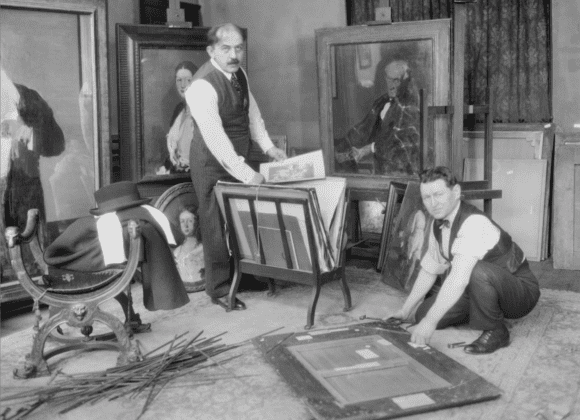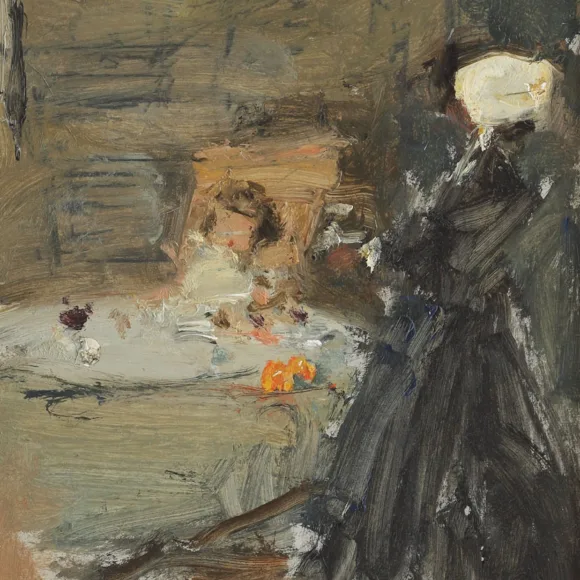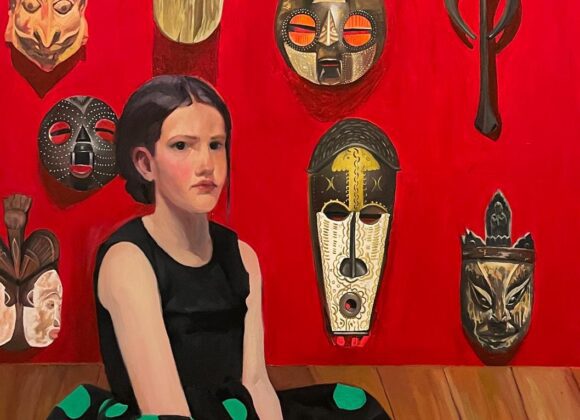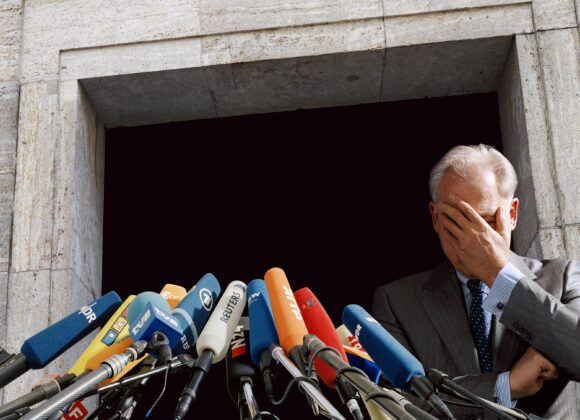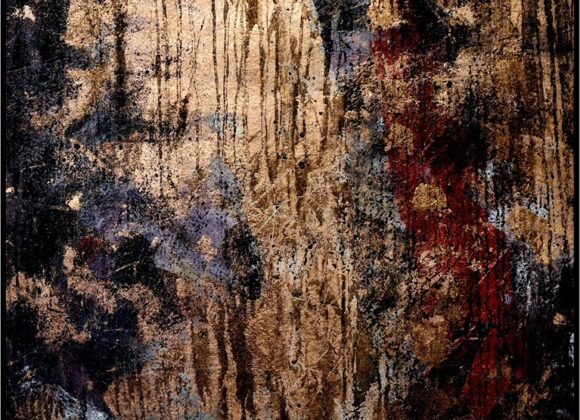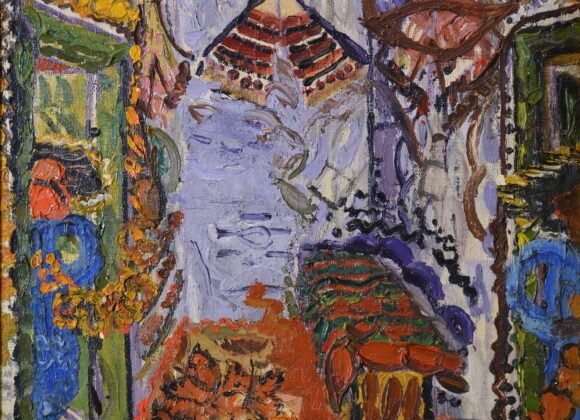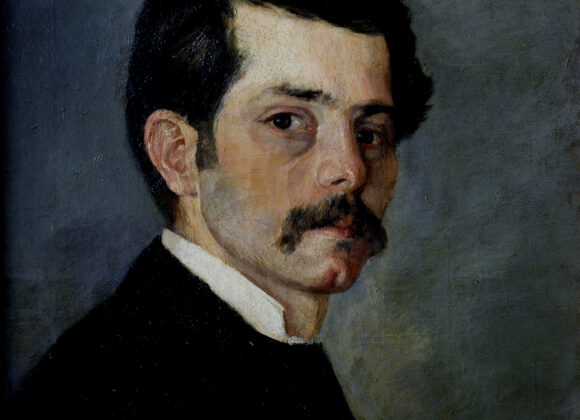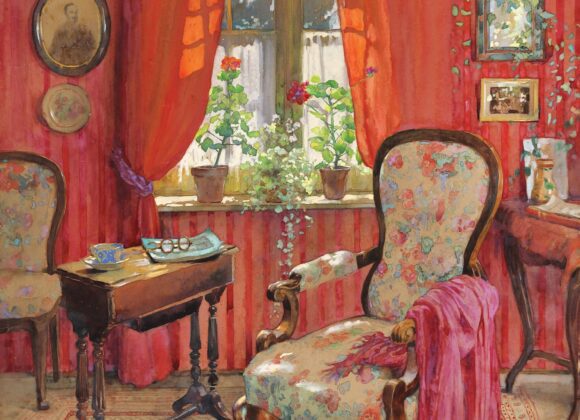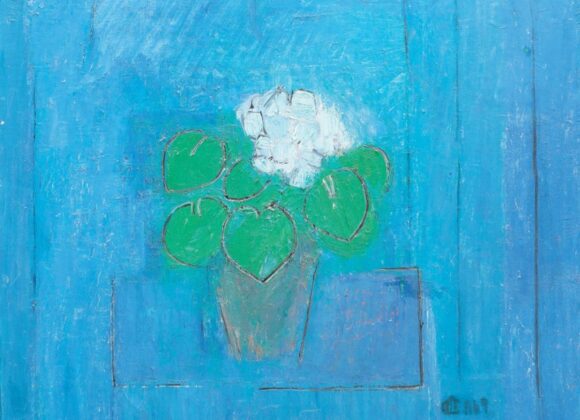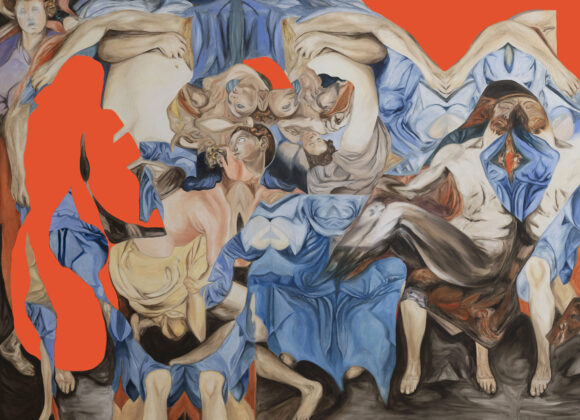Eustațiu Stoenescu
Portraitist of the Aristocracy
March 8 – July 28
Exhibition organised with the support of the Embassy of the United States of America in Romania and in partnership with the Bucharest Municipality Museum and the National Art Museum of Romania
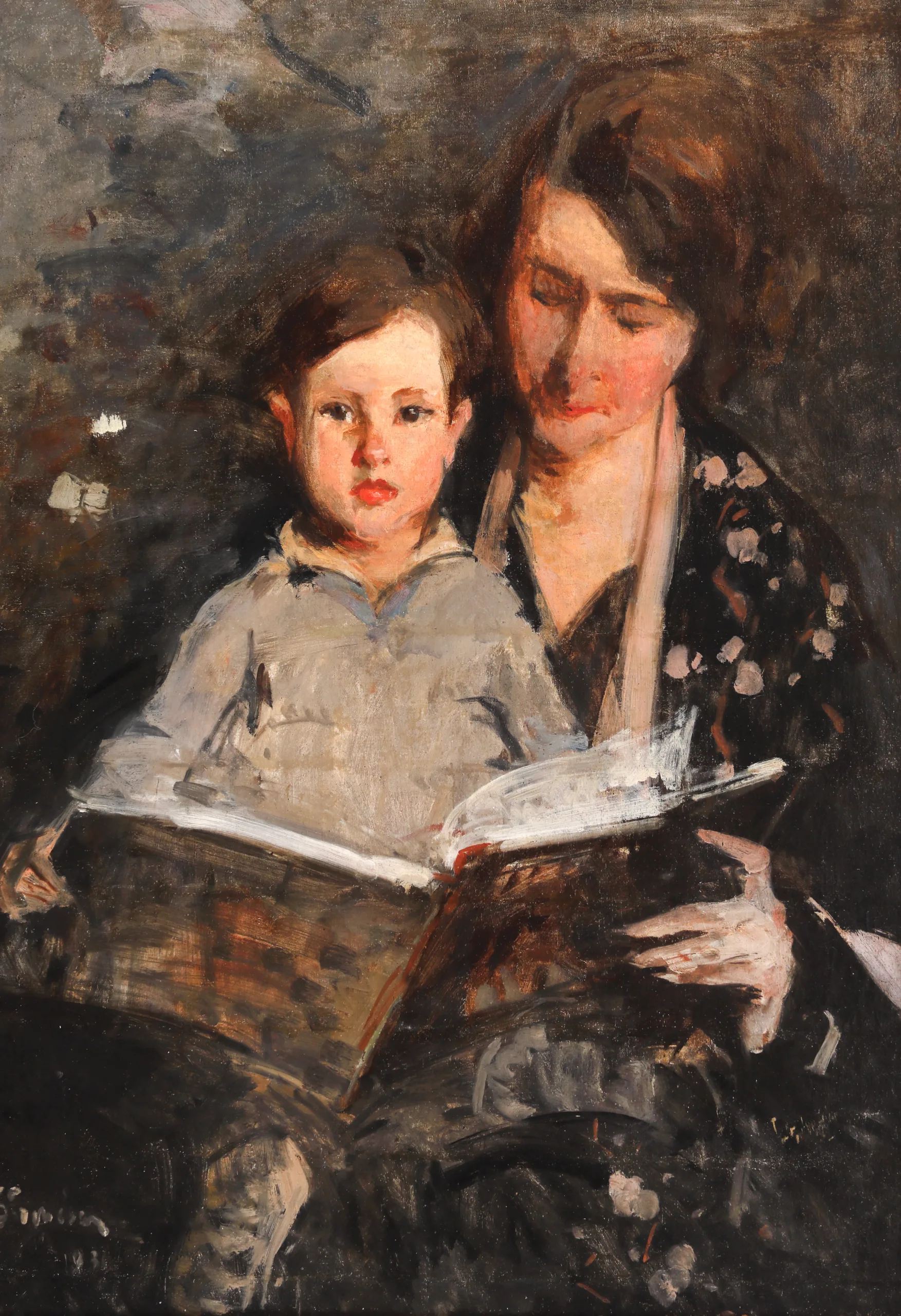
An artist with a remarkable international career, Eustațiu Stoenescu (1884-1957) is best known for the extensive gallery of portraits of his contemporaries. He was appreciated in his time especially for the expressiveness of children’s faces and elderly figures. The portraits of his son Dan, admirably captured in the French prize-winning The Breakfast, and of the Count de la Forest d’Yvonne, memorable for the impenetrable features of old age, are particularly emblematic.
Eustațiu Stoenescu travelled extensively, from Romania to France, Italy, USA and more – an aspect mirrored in the structure of the exhibition and representative of many of the artists active in the first half of the last century. His works travelled between various exhibitions, their titles undergoing changes depending on the audience. Thus, the artist naturally adapted to new contexts: Eustațiu Stoenescu became Eustache-Grégoire Stoénesco in France – a significant detail that can be deciphered in the signature itself.
Photos: Eustațiu Stoenescu – Romanian Academy Library; exhibition album Eustațiu Stoenescu – France; Portrait of King Michael I, by Eustațiu Stoenescu, collection of the National Art Museum of Romania
During his studies, his works show a natural search, but also a disarming passion for art and a great confidence in his own power. Eustațiu Stoenescu learned from the experience of his teachers, especially from that of Jean-Paul Laurens; full of creative curiosity, he admired works by great masters, including Nicolae Grigorescu, Diego Velázquez and James McNeill Whistler. He then became familiar with Italian art and experimented with a technique inspired by a letter by the illustrious Renaissance artist Pinturicchio, discovered in Florence, which he used to decorate the church founded by his family in Craiova, Saint George the New Church, a project he worked on for more than a decade.
Eustațiu Stoenescu created a vast work, insufficiently known today. He painted very much, he internalised his acquired experiences and showed openness to the innovative forms of art. He was concerned with the atmosphere, he built up forms through colour, he eliminated insignificant details, he used non finito effects. His paintings vibrate with spontaneous tints enhanced by fluid surfaces, chromatically harmonised in an admirable way.
Photos: Bernheim-Jeune Gallery, Paris, 1910; “The Eustațiu Stoenescu Exhibition” – review in Le Figaro; Return from the Fair [1911], by Eustațiu Stoenescu. This is a study for the work Gypsies on the Road, which is now at the Craiova Art Museum, a painting that was awarded the Honourable Mention at the Official Salon in Paris, in 1911.
Eustațiu Stoenescu participated in numerous group exhibitions and had several successful solo exhibitions. He made his debut in 1905 in Paris and in Craiova, almost simultaneously. In 1910, when the valuable Simu Museum was inaugurated in Bucharest, just like Constantin Brâncuși, the young artist had two representative works. We find him at the Salons organised by the Société des artistes français in Paris, at the Young Artists’ exhibitions, at the Official Salons in Bucharest, at events in his native Craiova and at three editions of the Venice Biennale, including the one in 1938, which inaugurated the Romanian Pavilion, when curator and author of the catalogue was Professor Nicolae Iorga. Eustațiu Stoenescu’s first major solo exhibition was in 1921 in Paris, at the Bernheim-Jeune Gallery, known for promoting avant-garde artists, where he presented paintings, drawings and engravings with a variety of artistic genres, as well as two sculptures representing his father.
Paul Durand-Ruel had galleries in Paris and New York and he invited Stoenescu to exhibit in the USA.
In 1930 he had an exhibition at the Durand-Ruel Gallery in New York, where he presented 51 works and was highly appreciated by the American public. Due to his success, the works were then taken to Chicago and to San Francisco. While the European public was particularly impressed by his compositions and portraits, the Americans admired his work as a whole, praising the chromatic harmony, the unique greys and his perfect technique.
The exhibition activity and the vast gallery of portraits of the personalities of his time were complemented by the assumption of an important pedagogical mission: young artists trained in his studios in Bucharest and in Paris, they supported him in making the remarkable mural decoration of the Saint George the New Church in Craiova and, later, they trained under his guidance at the Fine Arts Academy in Bucharest, where he became Professor and even Rector, between 1941 and 1944. In 1946, Professor George Oprescu, director of the “Toma Stelian” Museum and Dean of the Faculty of Letters in Bucharest, dedicated a monographic study to him, which is essential for understanding his work.
After a brilliant national and international career, the artist left Romania for good in 1947 and eventually settled in New York. He fell into oblivion for a while, mainly due to his portraits of the aristocracy and of the members of the Royal Family, but in recent decades his work has returned to the attention of specialists and art lovers. Eustațiu Stoenescu is now present in the great museums of the world.
Eustațiu Stoenescu, 1930, Bancroft Library, University of California
The exhibition at Art Safari reveals the complex personality of this valuable artist, admired both in the country and abroad. His work, the echoes in the press of the time and the awards he received (Silver Medal at the Official Salon in Paris in 1914, First Class Medal at the Official Exhibition of Living Artists in Bucharest in 1915, the “Legion of Honour” in the rank of Knight for his artistic merits in Paris in 1921, or the National Prize for Painting, in Bucharest, in 1942) are arguments for the need to study Eustațiu Stoenescu’s work as a whole.
The Breakfast, by Eustațiu Stoenescu (private collection)
Curator: Angelia Iacob
Set designer: Cosmin Florea
More exhibitions


